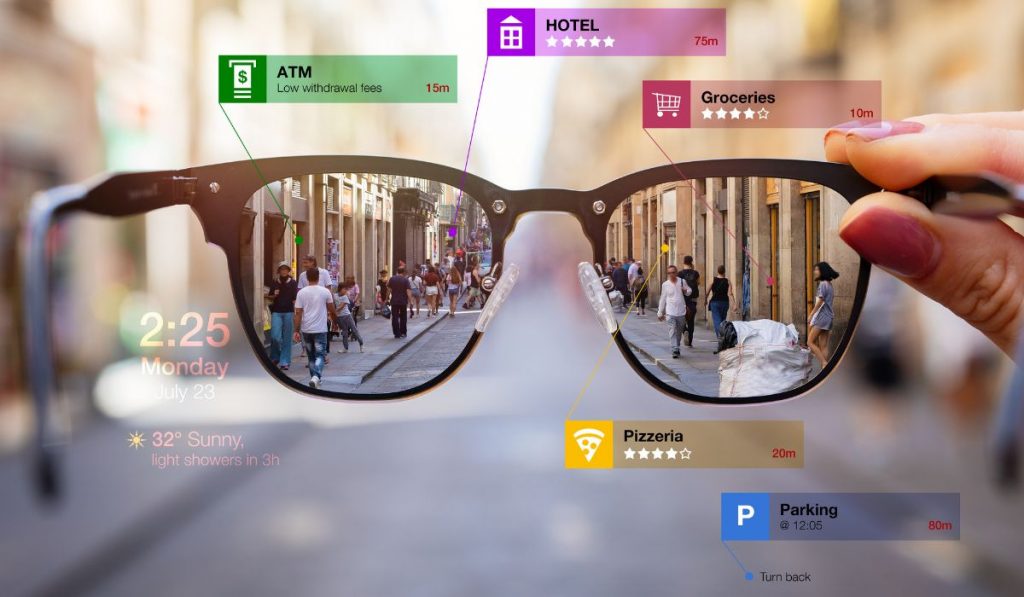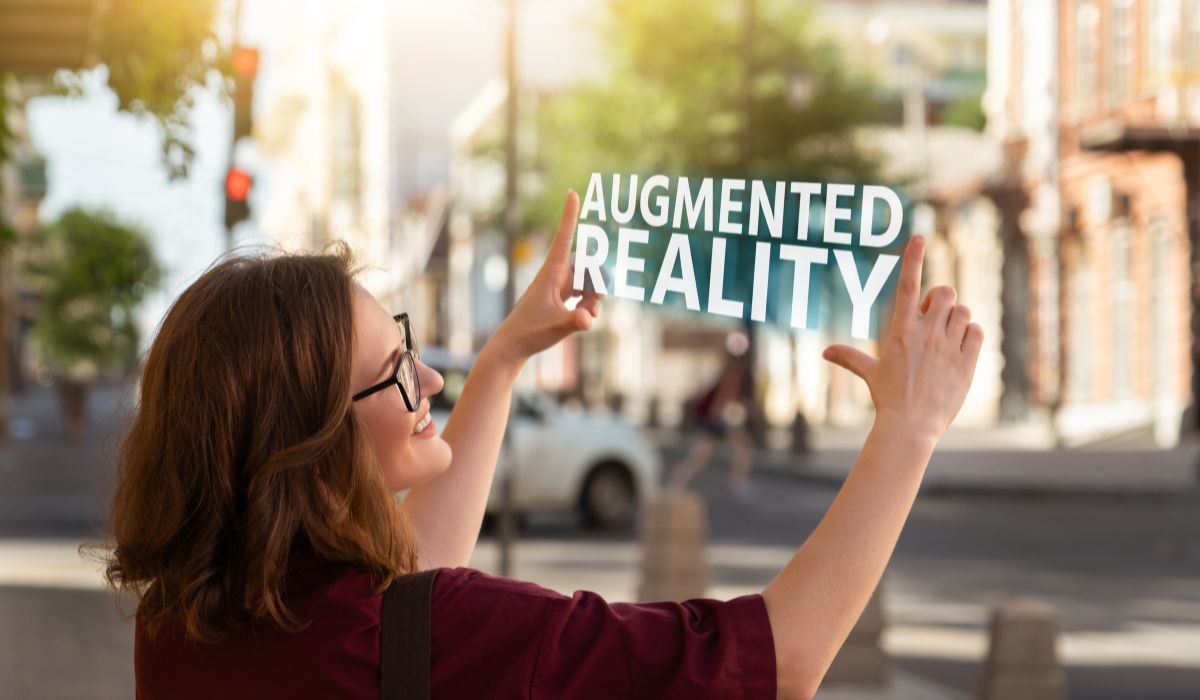Augmented Reality (AR) has been gaining significant traction in recent years, with more and more businesses and industries exploring its potential uses. From gaming to education and even healthcare, AR has the power to enhance and transform various aspects of our lives. This blog will deeply dive into AR development, exploring what it is, its key components, and how to get started.
If you are an aspiring entrepreneur and want to develop an AR App then you can check the list of top augmented reality development companies.
What is AR Development?
AR development refers to the process of creating and designing augmented reality experiences. This can include games, educational apps, and even business enterprise solutions. AR development is a multidisciplinary field that combines elements of computer science, game design, and user experience design.

Critical Components of AR Development:
Three components – hardware, software, and content – are critical to developing an AR experience. Each component depends on the others and must work together seamlessly to provide a practical AR experience.
#1. Hardware
AR development requires specialized hardware such as AR headsets, smartphones, and tablets to display the AR experience. These devices provide the platform for the AR content to be viewed and interacted with. The choice of hardware will depend on the specific application and the target audience. For example, AR headsets such as HoloLens or Magic Leap are more suited for enterprise or industrial use. At the same time, smartphones and tablets are more widely used for consumer-facing AR applications.
#2. Software
AR development relies on game engines, 3D modeling, and animation tools to create AR content. Game engines such as Unity or Unreal Engine are widely used for AR development because of their powerful 3D rendering capabilities and support for various platforms. 3D modeling and animation tools like Blender, Maya, or 3D Studio Max are also critical for creating the 3D models and animations used in AR experiences.
#3. Content
The content of an AR experience can include anything from 3D models and animations to sound effects and text. The developer can create or source the content from a third-party content provider. It’s essential to choose content that is appropriate for the target audience and aligns with the purpose of the AR experience. For example, educational content for children should be age-appropriate and engaging, while content for enterprise applications should be functional and informative.
Also, check the list of metaverse development companies.
Examples of AR Development:
1. Gaming
One of the most popular uses of AR is in gaming. Pokemon Go, for example, used AR to bring Pokemon characters to life in the real world. Players used their smartphone cameras to scan their surroundings and catch virtual Pokemon overlapped in real-world environments. This game was a massive success, with millions of players worldwide.
Another example is Ingress, an AR mobile game developed by Niantic, the same company that developed Pokemon Go. In this game, players must capture virtual portals in the real-world environment by walking to their location. The game uses GPS to track the player’s location and provide a unique gaming experience.
Please also check: Blockchain Game Development Companies.
2. Education
AR is also being used in education to enhance learning experiences. For example, anatomy apps use AR to provide students with a more interactive and engaging way to study the human body. These apps allow students to visualize and study different parts of the human body in 3D, which can be a more effective way to learn than traditional 2D images.
Also, read How Virtual Reality (VR) in Education is Changing Edtech Industry?
Another example is in history, where AR apps provide students with a more immersive way to learn about historical events and landmarks. These apps allow students to explore historical sites in 3D and even overlay historical events in the real-world environment, providing a more engaging and interactive way to learn about history.
3. Healthcare
AR is also being used in healthcare to improve patient outcomes. For example, surgeons are using AR to visualize complex medical procedures. These tools allow surgeons to overlay virtual images of the patient’s anatomy in the real-world environment, which can help them plan and execute procedures more accurately.
Another example is physical therapy, where AR provides patients with a more interactive and engaging way to recover from injuries. AR-based physical therapy apps provide patients with virtual guidance and feedback on their exercises, which can be more effective than traditional physical therapy methods.
These are just a few examples of how AR is used in different fields. The potential of AR is vast, and as the technology continues to evolve, we can expect to see even more innovative and exciting uses of AR in the future.
Also, read 5 Unique Ways VR is Transforming eCommerce with Examples.
Getting Started with AR Development:
Getting started with AR development can be challenging. Still, with a solid understanding of the basics, familiarization with the tools, and much practice, you can master the skills to create unique AR experiences. Also, networking and staying informed about the latest field developments can help you grow your skills and knowledge and stay ahead of the curve.

Step 1: Learn the basics
Before diving into AR development, it’s essential to have a solid understanding of the basics of computer science, game design, and user experience design. Understanding the fundamental concepts of programming, 3D graphics, and user experience design will help you to create better AR experiences. Some resources to learn the basics include online tutorials, MOOCs, and books.
Step 2: Familiarize yourself with the tools
Various AR development tools are available, such as Unity, Unreal Engine, and Vuforia. Familiarizing yourself with these tools and choosing the best fit for your project is essential. Each tool has its strengths and weaknesses; some may be more suited to specific projects than others. For example, Unity is popular for mobile AR development, while Unreal Engine is more suited for high-end AR applications.
Step 3: Practice
The best way to improve your skills is to practice. Start with simple projects and work your way up to more complex ones. This will help you to understand the development process and familiarize yourself with the tools and technology. There are a lot of tutorials and sample projects available online that can serve as a good starting point.
Step 4: Networking
Networking with other AR developers in the community can also be beneficial. Joining AR development forums, attending AR development meetups and conferences, and collaborating on projects with other developers can help you to learn from others and build a portfolio of work.
Additionally, it’s a good idea to stay up-to-date with the latest developments in the field. Following AR industry blogs, attending events and webinars, and reading research papers can help you to stay informed about new technologies and trends in AR development.
Check the list of top Virtual Reality (VR) Game Development Companies.
Conclusion
AR development is a multidisciplinary field with a lot of potential. From gaming to education and healthcare, AR has the power to enhance and transform various aspects of our lives. As the use of AR continues to grow, the demand for skilled AR developers will increase, making it a good career choice.
As a developer, getting started with AR development can be challenging. Still, with a solid understanding of the basics, familiarization with the tools, and practice, you can master the skills to create unique AR experiences.










Leave a Reply